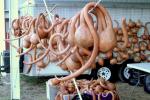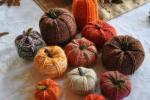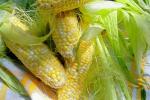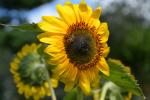Magazine
Leaf season never looked like this.
Fall in the Appalachians provides a spectacular show as the leaves turn bright shades of gold, orange, and crimson. The colors deepen into richer shades during a short season before turning brown and falling to the earth. In the mountains, valleys, towns or hiking trails throughout the region, the views provide a show that people will travel for miles to see.
The fruit you scoop from innards of a gourd can be just as tasty as any squash, pumpkin or zucchini. Boil it, mash it, grill it or mix it all up into a tasty casserole for your next potluck event. Cook your gourds with butter, olive oil or deep-fried breading. Season your gourds with brown sugar, cinnamon or sage. With cooler weather approaching, you’ll see more gourds at the farmers markets. And while you may be tempted to grab some gourds while they are ripe, consider leaving a few in the sun for more artistic endeavors.
Inside and Out
People have always appreciated the beauty of Appalachian fiber arts, going way back to the settler days. What began as a necessity, when mothers took great pains to stitch their children’s clothing with precision and pride, became an art form. Young women respected the hours and hours their forebears spent at quilting bees. Brides admired the handiwork in a fine-knitted afghan handed down from one generation to the next. And no home was complete without a carefully crafted needlepoint sampler hung in every bedroom.
It’s that time of year again.
Believe it or not, the first corn maze in the U.S. was built in Annville, PA, just east of Harrisburg, in 1993. So the practice of creating an elaborate maze through a cornfield isn’t exactly an ancient Appalachian tradition. Early mountain settlers didn’t dig up their crops to create crazy shapes in their gardens to get lost or to hide from native aggressors. Corn was a valuable foodstuff to the settlers. Recreation always came second to eating. Just like today.
Even George Washington loved to contra dance.
There’s an ancient African proverb: “If you can talk, you can sing. If you can walk, you can dance.” And the Appalachian settlers took that advice to heart. They danced to celebrate the spring planting and the fall harvest, as well as weddings, births, the midwinter feast… the list goes on. Whenever musicians gathered to play, people danced to the music.
- ‹ previous
- 4 of 21
- next ›






45a2.jpg?itok=Ack-pic1)

